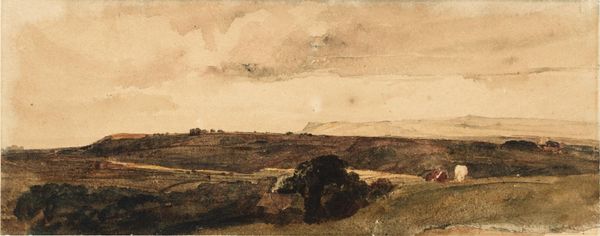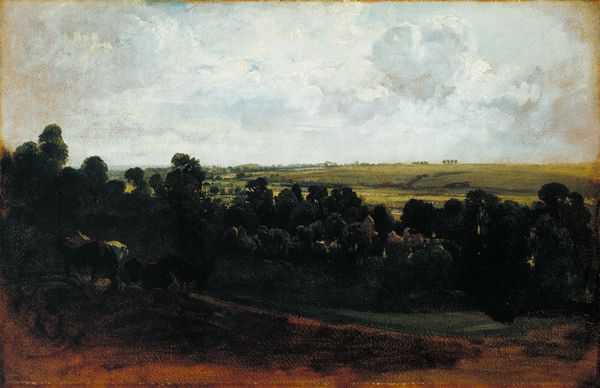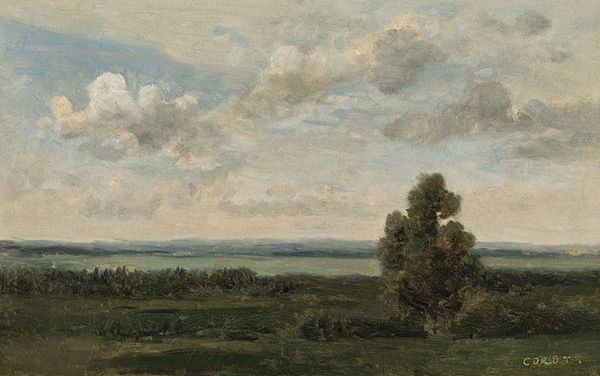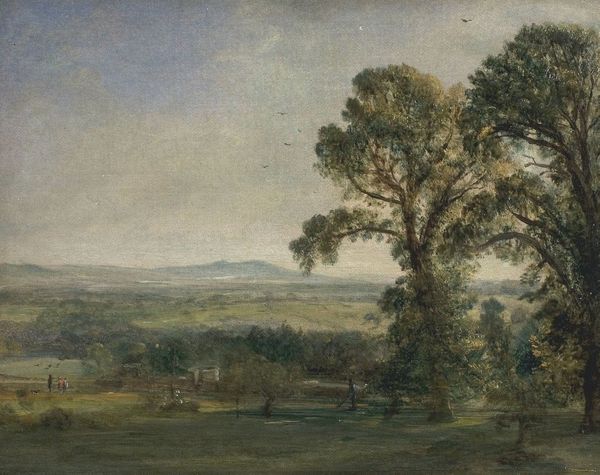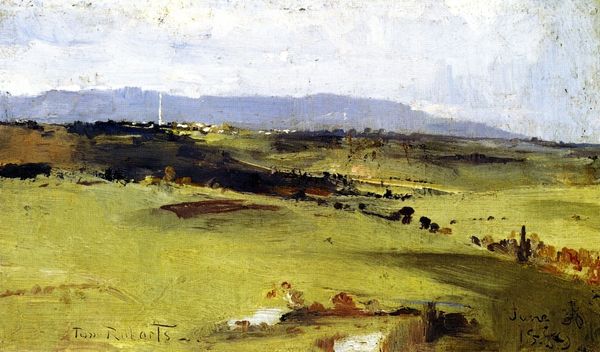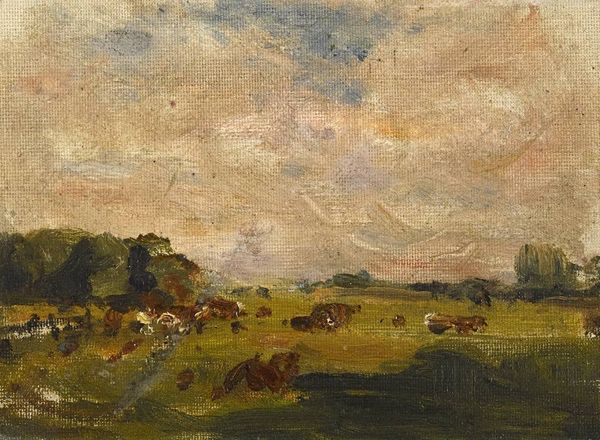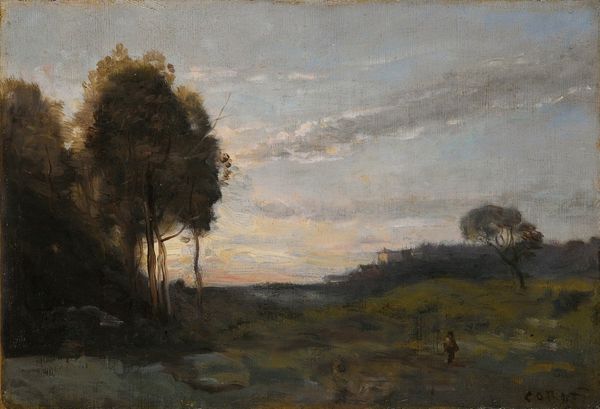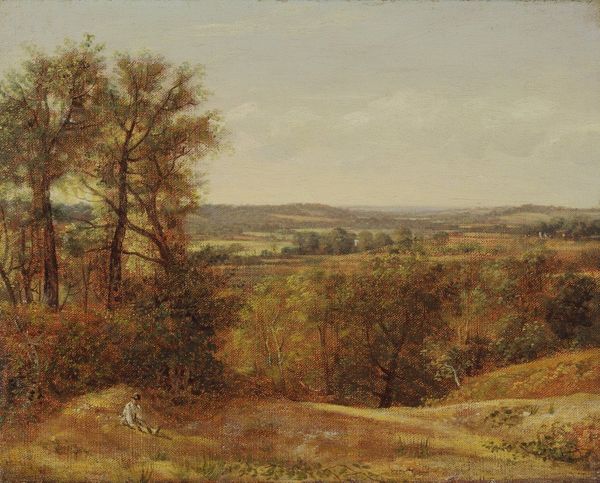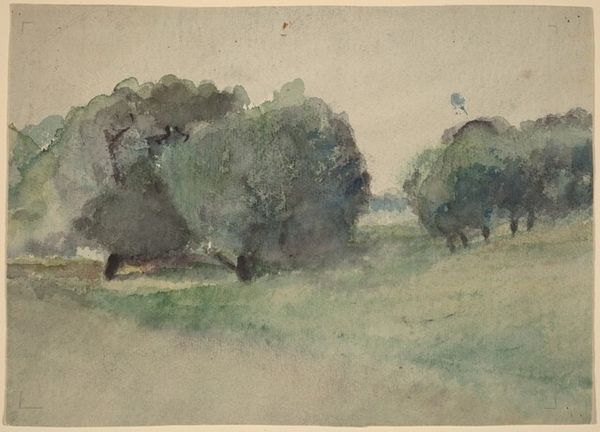
Copyright: Public Domain: Artvee
Curator: At first glance, this work emits a profound sense of tranquility and quiet observation, wouldn’t you agree? Editor: Absolutely, there is a meditative quality here. Before us, we see George Inness' "Olive Trees at Tivoli" crafted in 1873, an understated work executed with remarkable subtlety, evoking both Romanticism and Impressionism. Curator: How fascinating. Tivoli, near Rome, was a popular destination for artists seeking classical inspiration. Inness, part of the American expatriate community, produced plein-air studies such as this in the surrounding countryside, influencing generations with its evocative aesthetic. What grabs you the most about it? Editor: For me, it is the perspective. We are placed above the valley, yet somehow within it, almost as active participants in the scene's unfolding. We can consider how such landscapes promoted a sense of shared identity. It also draws attention to land usage, and questions the interaction of nature with people. Iness’ work engages in a silent dialogue with both tradition and modernity. Curator: Very true. While not overtly political, the choice to depict olive groves -- ancient symbols of peace and prosperity -- does subtly engage with the broader societal discourse. The light, filtered through delicate washes of paint, has the feeling of fleeting moments in the countryside, doesn't it? Editor: The muted palette emphasizes the quiet solitude of the countryside and invites us to consider a slower, perhaps more conscientious relationship to land and location, a quiet rebuke to some expressions of modern development that disregard ecological impact. Curator: Indeed, while Inness enjoyed a good level of success during his lifetime, works such as this, offer an almost radical perspective, asking viewers to consider place in an age that championed mobility and constant change. Editor: I couldn't agree more, especially in our contemporary context. "Olive Trees at Tivoli" serves as an artistic catalyst, stimulating important discussions about land, history, and the human relationship with nature. Curator: This subtle artwork holds profound historical resonance and enduring inspiration for the viewer, doesn't it? Editor: A resonant commentary, softly spoken yet powerfully felt.
Comments
No comments
Be the first to comment and join the conversation on the ultimate creative platform.

